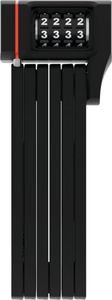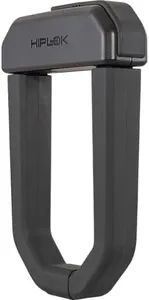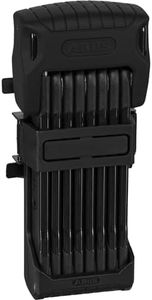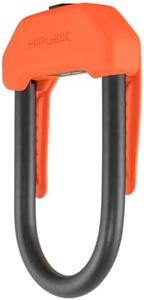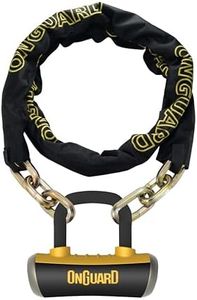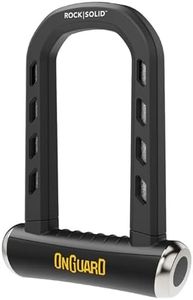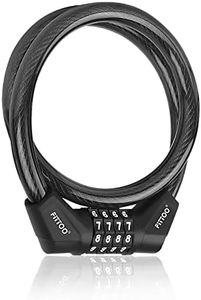We Use CookiesWe use cookies to enhance the security, performance,
functionality and for analytical and promotional activities. By continuing to browse this site you
are agreeing to our privacy policy
10 Best Bike Locks
From leading brands and best sellers available on the web.Buying Guide for the Best Bike Locks
Choosing the right bike lock is essential to keep your bike secure and give you peace of mind when leaving it unattended. There are several different types and levels of security to consider, and each comes with its own strengths and weaknesses. The best lock for you depends on where you’ll be parking your bike, how long you’ll leave it, and how much convenience versus protection you want. It’s important to balance security with usability, and knowing which key features matter most can help you make an informed decision.Lock TypeThe type of lock refers to the design and mechanism used to secure your bike. Common types include U-locks, chain locks, cable locks, and folding locks. U-locks are known for strong security and resistance to bolt cutters, making them suitable for high-risk areas. Chain locks are flexible and can secure your bike to a variety of objects, with the trade-off of being heavier. Cable locks are lightweight and portable but offer the lowest security and are best for low-risk situations or as a secondary lock. Folding locks attempt to balance security and portability. Choosing the right type depends on how and where you usually lock your bike. For high-theft urban environments, sturdier U-locks or thick chain locks are recommended, while lighter locks may suffice for quick stops in safer areas.
Shackle or Chain ThicknessThe thickness of the shackle (for U-locks) or chain links determines how resistant the lock is to cutting tools. Thicker shackles and chains are harder to cut or break, so they offer better protection. Thickness typically ranges from under 8mm (lower security, easier to carry) to over 13mm (high security, heavier). If you need serious protection for long-term or overnight locking in public places, choose a lock with a thicker shackle or chain. For quick stops in low-risk areas or if you need something very lightweight, a thinner lock may suffice.
Locking MechanismThe mechanism is what keeps your lock closed and includes factors like the quality of the cylinder, key type, and how many locking points (such as single or double-bolted). More robust mechanisms are harder to pick or force open. Some locks have double-bolted shackles, offering better resistance to prying. If you want maximum security, especially in areas prone to theft, look for advanced or double-locking mechanisms and high-security key designs. If ease of use and simple operation matter more for you, a basic but proven lock may be fine.
PortabilityPortability refers to how easy it is to carry the lock when cycling or walking. Heavier, bulkier locks can be cumbersome for daily use but typically offer better security. Lightweight locks are easier to transport but may compromise on protection. Consider how far and often you’ll carry the lock—you might accept more weight and size for long-term peace of mind in high-risk areas, or favor a compact lock for quick errands or shorter trips.
Length or SizeThe size of the lock affects not only what you can secure your bike to but also how easily you can lock frame and wheels at the same time. Short U-locks are very secure against leverage attacks but might not fit around larger objects or multiple parts of the bike. Longer chain or cable locks offer more flexibility but could be easier to attack. Think about your common locking situations—if you often park at racks or thick signposts, you may need a longer lock. If you want the tightest, most secure fit, a smaller U-lock could be the best choice.
Weather ResistanceWeather resistance is about how well the lock stands up to rain, dust, and extreme temperatures. Some locks come with weatherproof coatings or covers to keep the mechanism working smoothly over time. If you regularly lock your bike outdoors, especially in challenging climates, look for locks with rust-resistant materials and covers to protect the keyhole and cylinder. If your bike is mostly indoors or only outside briefly, this may be less of a concern.

